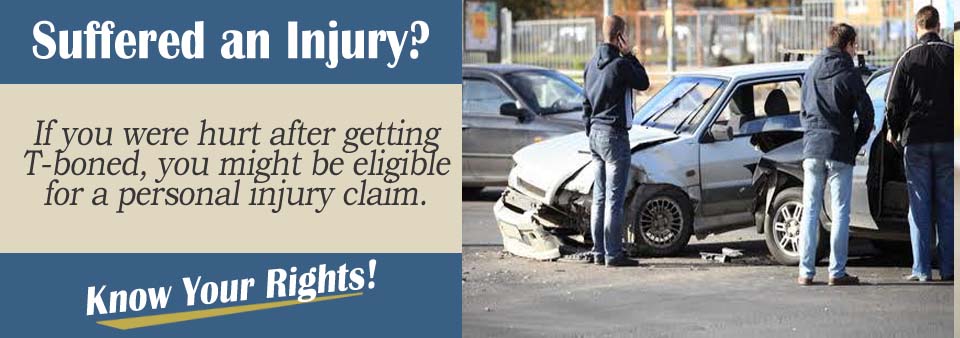It happens in a flash. You are driving along when a driver in front of you rear-ends the driver in front of him. You swerve to avoid the crash, only to be t-boned by another driver. In this unfortunate chain of events, who would be the party responsible for damages that occurred as a result?
We have asked attorney Alaina Sullivan about what you should do. Here is what she had to say:
Normal T-Bone Accidents
Most T-bone accidents occur because of one driver not paying attention and pulling out in front of another driver or running a red light. In those situations, you need to prove negligence on the part of the other driver. However, when a chain reaction of events takes place that lead to a T-bone accident, this normal situation is suddenly tossed aside.
The Unsuspecting Driver
Odds are, if the driver who T-boned you was following rules of traffic, driving legally, when you drove into his or her path, that person is not liable for the accident. After all, defensive driving is one thing, but having the ability to see into the future is a whole other deal.
That person simply could not anticipate that series of events happening so quickly. That person may even attempt to come after you for damages since you are the car that came into his or her path.
Comparative Negligence

Fault is never black and white. Many times, fault can be divided up amongst the parties and does not fall solely one party alone. Courts and insurance companies will sometimes find that you hold responsibility for injuries sustained to yourself and others in an accident. This is otherwise known as comparative negligence. If courts find that you were negligent to some extent in the accident, that will reduce your portion of damages received.
Along the same line, however, if the court finds that the person causing the first accident which made you swerve causing your own accident is at fault, the principle of comparative negligence will reduce the amount of fault you are being given in the law suit you face. That comparative negligence is going to be key if the person you T-boned sues you for their damages.
How Negligent Were You?
However, one item to keep in mind is your reaction when coming upon the first crash. Would a reasonable person have reacted the same way you had? If the court finds that you overreacted or irrationally reacted to the approaching accident, that will make your case a little more difficult to prove.
Get a Police Report
If an accident occurs from you avoiding a separate accident, police are probably already at the scene. However, if they are not, you should call the police as soon as the accident takes place. You will need this documentation to show what happened.
Otherwise, the driver you were involved with could argue that the negligence was solely on you and not at all attributable to the other accident. Police officers are trained in recreating what occurred in an accident, and it is imperative you get this documentation to support your claim.
Collect Evidence
In addition to the police report, make sure you collect as much evidence as you can to show what happened during the accident, specifically focusing on the first accident you attempted to avoid. Take pictures of the accident scene yourself and note any details you can take down if possible.
Further, get names and contact information of witnesses who observed what happened. These people will be very important when putting together your case.
Consult with a Personal Injury Attorney
A licensed personal injury attorney will be able to evaluate your case and determine if you have a claim against the other party’s insurance company. For the best chance of receiving the compensation you need to pay for medical bills, auto body bills, and pain and suffering, you should speak with a personal injury attorney in your area today.